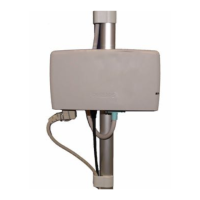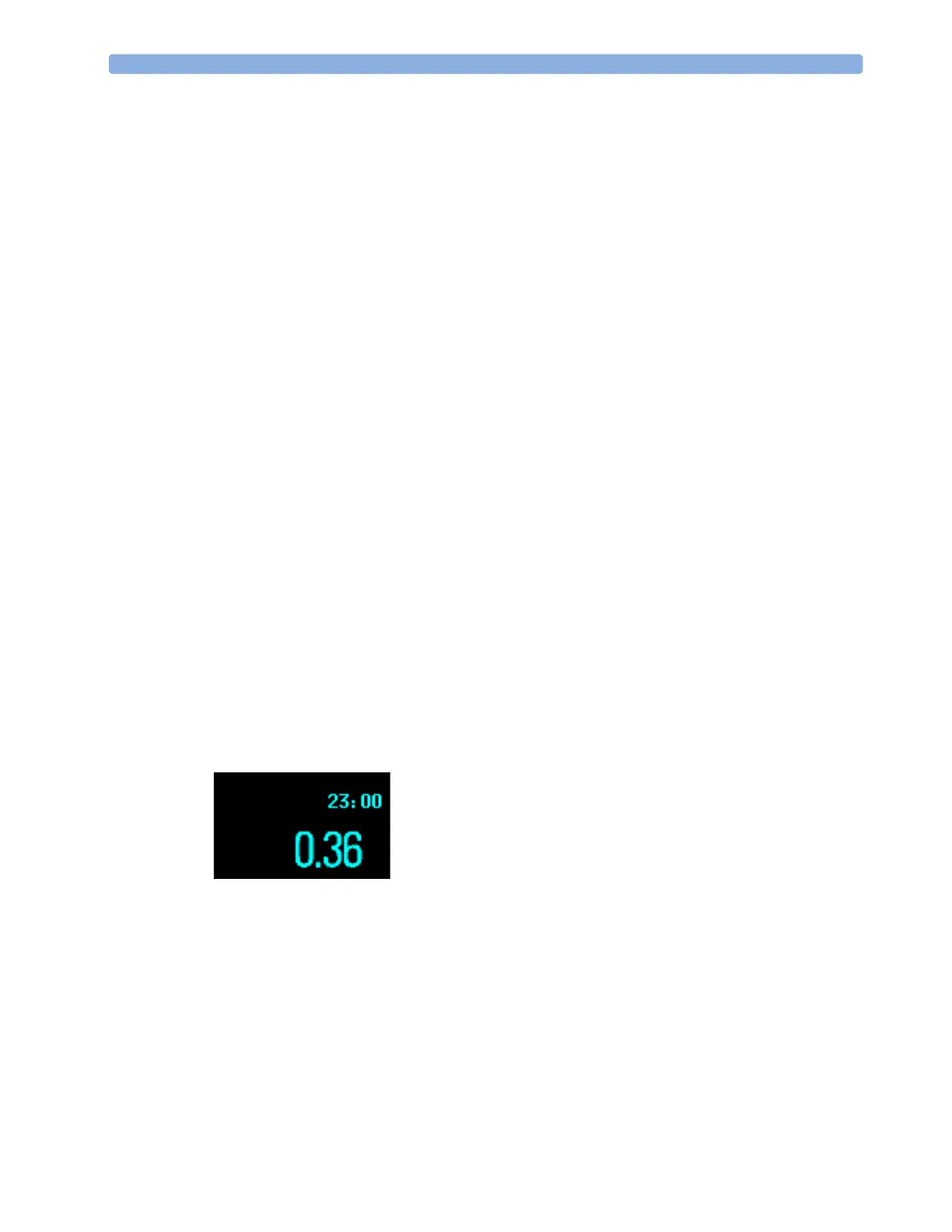10 Monitoring SpO
2
Changing the Averaging Time
150
Changing the Averaging Time
Depending on the monitor configuration, you may be able to change the averaging time for the SpO
2
values. The averaging time represents the approximate time period used for the calculation. The exact
averaging algorithm depends on the SpO
2
technology (option) used and on the signal conditions. The
longer the averaging time, the longer the time needed until the SpO
2
value reflects the physiological
event. Fast averaging is useful for situations where an extremely fast measurement is required or few
artifacts are expected. Use slow averaging where you expect the number of artifacts to be relatively high.
1 In the SpO
2
Setup, select Average.
2 Select the required averaging time from the list.
Setting the Measurement Mode
When a telemetry device supplies SpO
2
T to the monitor via short range radio transmission, the
monitor will have a manual measurement mode available. This allows SpO
2
measurements to be made
on request and not continuously, helping to save the telemetry device’s battery power.
To set the measurement mode,
1 In the SpO
2
Setup, select Mode.
2 Select Continuous or Manual mode.
Making a Manual Measurement
When the measurement mode is set to manual,
♦ In the SpO
2
Setup, select Measure SpO
2
.
When manual measurements are made, there will be no continuous SpO
2
monitoring or alarming.
The manual measurement value reflects a momentary status. The numerics from SpO
2
T
measurements made in manual mode, for example SpO
2
T, PerfT, PulseT, will remain for a time on
the main screen. They are annotated with the time that the measurement was made to distinguish them
from continuously measured values.
Understanding SpO
2
Alarms
This refers to SpO
2
specific alarms. See the Alarms section for general alarm information. SpO
2
offers
high and low limit alarms, and a high priority desat alarm. You cannot set the low alarm limit below
the desat alarm limit.
Perf T

